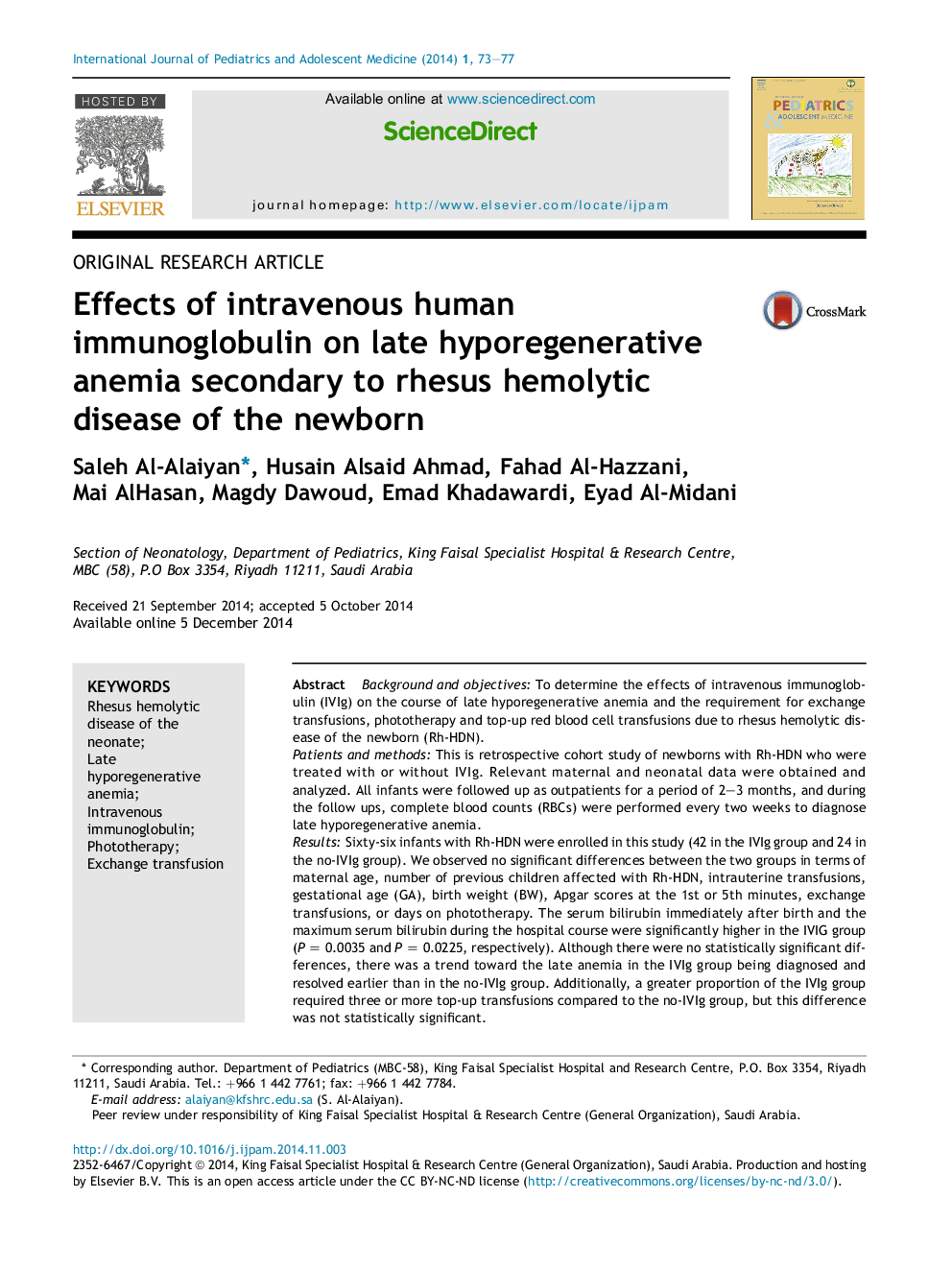| کد مقاله | کد نشریه | سال انتشار | مقاله انگلیسی | نسخه تمام متن |
|---|---|---|---|---|
| 4153696 | 1607050 | 2014 | 5 صفحه PDF | دانلود رایگان |
Background and objectivesTo determine the effects of intravenous immunoglobulin (IVIg) on the course of late hyporegenerative anemia and the requirement for exchange transfusions, phototherapy and top-up red blood cell transfusions due to rhesus hemolytic disease of the newborn (Rh-HDN).Patients and methodsThis is retrospective cohort study of newborns with Rh-HDN who were treated with or without IVIg. Relevant maternal and neonatal data were obtained and analyzed. All infants were followed up as outpatients for a period of 2–3 months, and during the follow ups, complete blood counts (RBCs) were performed every two weeks to diagnose late hyporegenerative anemia.ResultsSixty-six infants with Rh-HDN were enrolled in this study (42 in the IVIg group and 24 in the no-IVIg group). We observed no significant differences between the two groups in terms of maternal age, number of previous children affected with Rh-HDN, intrauterine transfusions, gestational age (GA), birth weight (BW), Apgar scores at the 1st or 5th minutes, exchange transfusions, or days on phototherapy. The serum bilirubin immediately after birth and the maximum serum bilirubin during the hospital course were significantly higher in the IVIG group (P = 0.0035 and P = 0.0225, respectively). Although there were no statistically significant differences, there was a trend toward the late anemia in the IVIg group being diagnosed and resolved earlier than in the no-IVIg group. Additionally, a greater proportion of the IVIg group required three or more top-up transfusions compared to the no-IVIg group, but this difference was not statistically significant.ConclusionIVIg might have had an effect on the early development of late anemia and might have shortened the duration of late anemia relative to the infants who did not receive IVIg. The exchange transfusions and the days on phototherapy were not affected by IVIg.
Journal: International Journal of Pediatrics and Adolescent Medicine - Volume 1, Issue 2, December 2014, Pages 73–77
